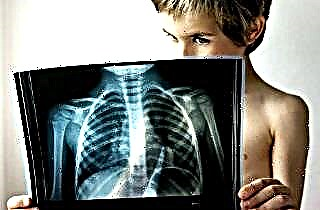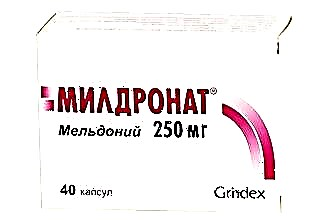There are many diseases of the nasopharynx that can be easily contracted. All infectious diseases are infectious in nature, including tonsillitis (acute tonsillitis). Since of all infectious pathologies of the ENT organs, angina has the highest index of contagiousness, a sick person poses a great danger to others, as an active source of infection. Indeed, when breathing, sneezing, coughing, the pathogenic microflora spreads over a fairly large distance. How long can a person be contagious? How long is the infectious period of acute tonsillitis?
What is angina
 Sore throat (acute tonsillitis) is a condition in which the palatine lymphoid glands (tonsils) are affected. It is believed that after the removal of the tonsils, a person does not get sick with acute tonsillitis. This is not true. The number of relapses does decrease, but other parts of the lymphatic pharyngeal ring become inflamed. However, the frequency of diseases and the severity of the course is determined for the most part not by the presence or absence of tonsils, but by the state of the human immune system. Tonsils belong to the peripheral organs of the immune system, and they are the first to be attacked by pathogens.
Sore throat (acute tonsillitis) is a condition in which the palatine lymphoid glands (tonsils) are affected. It is believed that after the removal of the tonsils, a person does not get sick with acute tonsillitis. This is not true. The number of relapses does decrease, but other parts of the lymphatic pharyngeal ring become inflamed. However, the frequency of diseases and the severity of the course is determined for the most part not by the presence or absence of tonsils, but by the state of the human immune system. Tonsils belong to the peripheral organs of the immune system, and they are the first to be attacked by pathogens.
The index of manifestation (index of infectiousness, contagiousness) is extremely high. This means that when in contact with a sick person, 100% of others are infected, and the most susceptible, those with weakened immunity, get sick. In most cases, these are children under 5 years old, young people under 30 years old, pregnant women, people with chronic organic pathologies. Of all cases, 75% are young people under 30 years of age.
Elderly people get sick less often but more severely - often with complications
Infection methods
- The most common route of infection with tonsillitis is aerobic (airborne). A short contact with a sick person is enough for a healthy person to contract an infection. If a healthy person has strong immunity at the same time, there are no bad habits, there are no unfavorable factors that contribute to infection, then such a person will either suffer a disease in a mild form, or become a carrier of infection and be contagious to others. If, for example, a patient came to a team, then all 100% of the team members who are in contact with the patient are considered potentially infected.
- Another route of infection is contact, mainly through household items, the use of one dish. You can get infected after shaking hands with a patient, if after that you do not wash your hands properly. The fact is that microorganisms are localized not only in the lesions, but also on the skin, on the mucous membranes, including the genitals, on the surface of wounds. It is especially dangerous if a healthy person who is in contact with an infected person has an open wound on the skin, then pathogens very easily and quickly penetrate the body and spread through it with the blood stream.

- Self-infection (autoinfection) occurs when there is a constant source of infection in the nasopharynx, it can be any chronic disease of the ENT organs, teeth, oral cavity, including the tonsils themselves. In chronic tonsillitis, relapses of the disease occur regularly in an acute form, which are called angina.
- The alimentary or fecal-oral mechanism involves the elimination of pathogens from the intestines during feces and entry into a susceptible body through contaminated hands, contaminated food and water.
- If a pregnant woman has a sore throat, the fetus can become infected through the vertical (transplacental) transmission mechanism.
- The hemocontact option involves the transmission of pathogenic microflora through blood transfusion or any other medical manipulation related to blood.
The private transmission option is through sexual intercourse.
Causes
The disease is caused by one of the many groups of microorganisms: bacteria, viruses, fungi, intestinal and spindle-shaped shelf, spirochete. The most common causative agent of acute tonsillitis is group A streptococcus.
To activate the pathogenic microflora in the body, predisposing factors are needed: hypothermia, acute stress, chronic fatigue, vitamin deficiency, bad habits leading to throat irritation, prolonged exposure to an allergen, weakening of immunity due to chronic diseases.
The peak of the disease occurs in the autumn-winter period, with the exception of herpetic sore throat, which is common in the summer, when the Kosaki virus, which is the causative agent of this type of disease, is activated.
Periods of development and course of angina
- The incubation period is the time between the entry of the pathogen into the body and the appearance of the first symptoms. The incubation time for acute tonsillitis of viral etiology is on average 72 hours (2-5 days), for angina of bacterial etiology, this period lasts a long time - up to two weeks. At this stage, the pathogen actively multiplies and accumulates it and toxins until the threshold when the body begins to react violently to the vital activity of microbes.
It is because of such a wide range of the incubation period that it is impossible to say exactly how many days angina is contagious. It will be infectious from the start of incubation until the symptoms of the disease have subsided. Not earlier than on the fifth or sixth day after the temperature has returned to normal, you can begin to contact the patient.
The stronger a person's immunity, the longer the incubation period will last.
- The prodromal period (stage of precursors) is characterized by the onset of clinical manifestations. The patient feels fatigue, weakness, weakness, headache. The prodrome lasts no more than two days.
- The period of development is characterized by the appearance of pronounced symptoms characteristic both for a group of infectious diseases (intoxication) and directly for acute tonsillitis (enlargement and pain in the tonsils, plaque and purulent plugs in the tonsils, severe pain when swallowing). In addition, the phase of clinical manifestations is divided into: the stage of the increase in symptoms, the stage of the flourishing of the disease, the stage of the extinction of symptoms. The patient is especially contagious during the first two days of the period of development of the disease.
- The period of convalescence (recovery) can develop according to three scenarios:
- fast period (crisis) - the most favorable, when pronounced manifestations disappear quickly;

- slow period (lysis);
- transition to the chronic stage.
- fast period (crisis) - the most favorable, when pronounced manifestations disappear quickly;
In addition, convalescence can be complete when the symptoms have completely disappeared and the infectious agent is removed from the body, or with the development of complications.
The consequences of acute tonsillitis are extremely severe, requiring immediate medical attention and long-term treatment:
- rheumatism is the most common complication;
- myocarditis, endocarditis, pericarditis;
- arrhythmia;
- heart defects;
- laryngeal edema is a consequence that can be fatal without urgent help;
- abscess of the tonsils (phlegmonous tonsillitis);
- blood poisoning is a life-threatening condition;
- brain abscess, meningitis can also be fatal if the patient is not treated.
What affects the duration of sore throat
- type of pathogen. The viral form of the disease passes easier and faster than the bacterial one;
- form of the disease. The mildest form is catarrhal, it passes easier and faster than other forms, on average within a week. Other typical forms of the disease (lacunar, follicular, phlegmonous, fibrous) usually last longer, up to two weeks or more.Atypical forms (syphilitic, herpetic, laryngeal, fungal, monocytic) can last for a very long time. For example, syphilitic - up to several years or all life;
- provoking factors;
- the general state of human health, the presence of chronic diseases;
- living conditions, food;
- bad habits;
- ecology;
- how timely the treatment was started, as well as the literacy of the therapy;
 the state of immunity is the main indicator that affects the duration of the disease.
the state of immunity is the main indicator that affects the duration of the disease.
Isolation of the patient will help to avoid infection, you need to contact the patient as little as possible until his full recovery, and especially in the acute phase of the disease. It is necessary to adhere to elementary preventive measures: strengthening immunity, a healthy lifestyle, rational nutritious nutrition, avoiding hypothermia, maintaining personal hygiene, and timely referral to a specialist.
By transferring a sore throat on the legs, the patient puts at great risk not only his own health and life, but also the health of those around him.



 the state of immunity is the main indicator that affects the duration of the disease.
the state of immunity is the main indicator that affects the duration of the disease.

